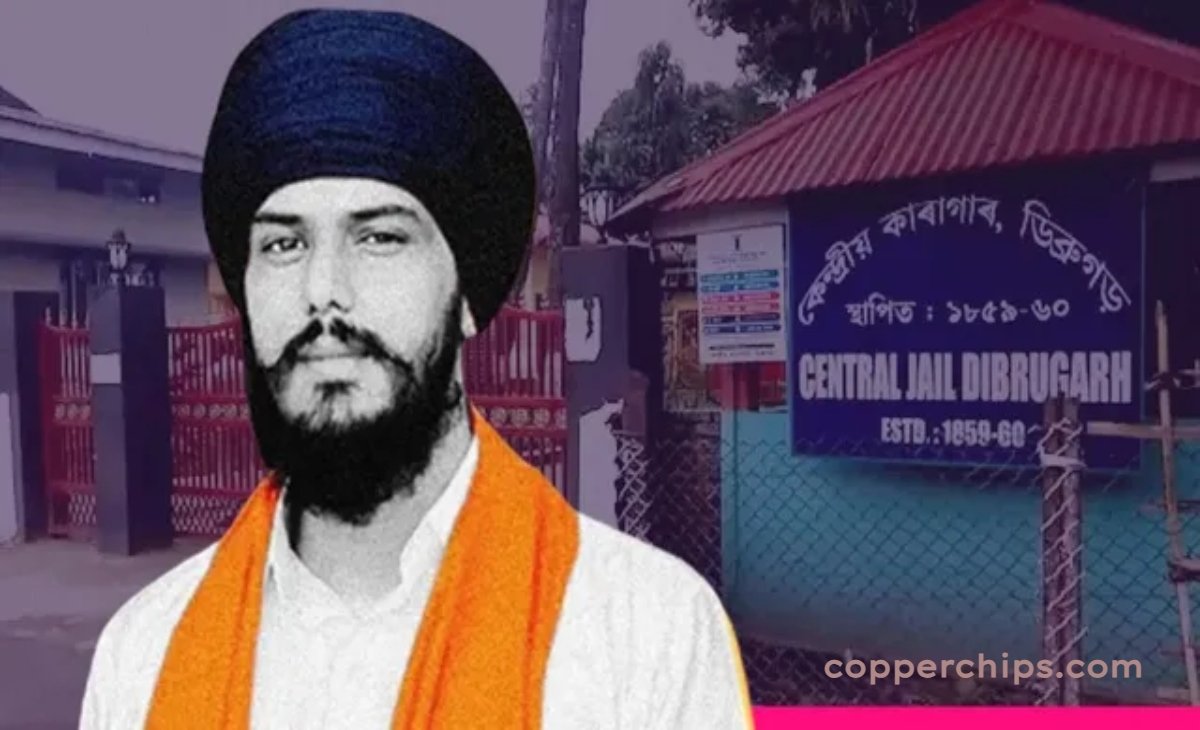In the vast and vibrant political and cultural fabric of Punjab, few figures have sparked as much curiosity, controversy, and conversation as Amritpal Singh. From his sudden emergence in the socio-political landscape to his fiery speeches and bold ambitions, his story is both perplexing and fascinating. Amritpal Singh is not just a name that pops up on news tickers or debate panels. He’s become a symbol — to some, a revolutionary voice echoing the concerns of a section of Sikh youth; to others, a radical element disrupting the delicate balance of harmony.
Through this article, we delve deep into the life of Amritpal Singh — tracing his roots, beliefs, controversies, achievements, and everything in between. If you’ve been wondering who he really is, this extensive narrative is for you.
Amritpal Singh: The Rise of a Name
Amritpal Singh did not begin his journey under the glaring spotlight. Born and raised in the rural heartland of Punjab, he belonged to a humble background like many other youth of the region. But unlike most, he had an aura that hinted at something larger. It wasn’t just about education or ambition; it was about ideology. The fire that would later define his speeches and his politics was kindled early.
You May Also Like: Timur Turlov: Driving Financial Innovation and Economic Progress
Before becoming a public figure, he reportedly worked abroad in the Middle East. This phase of his life remains shadowy yet essential. It exposed him to a diaspora of ideas and identities. His connection to the Sikh faith deepened during this period, ultimately leading him back to Punjab with a vision.
From Dubai to Punjab: A Dramatic Return
What made headlines was not merely his return to India but the way he did it. Amritpal Singh came back to Punjab, donning traditional attire, sporting an unshorn beard, turban, and speaking the language of revolution — reminiscent of the Khalistani separatist era that once haunted the region. His entrance was almost theatrical, immediately grabbing attention from every corner.
Some compared him to Jarnail Singh Bhindranwale, a polarizing Sikh preacher from the 1980s. Whether this comparison was fair or hyperbolic, it certainly added fuel to his emerging image as a voice of rebellion.
The Waris Punjab De Leadership
One of the defining moves in Amritpal Singh’s career was taking charge of Waris Punjab De, an organization previously headed by the late Deep Sidhu. This marked a pivotal turn. Sidhu, an actor-turned-activist, had built a reputation during the farmer protests, and his death in a tragic car accident left a leadership vacuum. Amritpal filled that void, not just administratively, but ideologically.
Under his leadership, the group shifted focus from cultural advocacy to a more aggressive and religious-nationalist stance. His speeches became laced with critiques of the Indian government, calls for Sikh unity, and demands for what he claimed were religious and political rights.
Controversies and Clashes with Authorities
It wasn’t long before Amritpal Singh found himself under the scanner. Accusations of spreading separatist ideologies, unlawful assemblies, and inciting unrest became regular headlines. The government responded with surveillance, arrests of his associates, and eventually, legal action directly targeting him.
One of the most dramatic events in this saga was the multi-agency manhunt launched in 2023 to arrest Amritpal. It resulted in internet shutdowns across Punjab, roadblocks, curfews, and widespread fear. However, his supporters rallied behind him, viewing the crackdown as suppression of Sikh voices.
Amritpal Singh’s Ideological Standpoint
What makes Amritpal Singh a compelling figure isn’t just what he says, but how he says it. His speeches aren’t chaotic. They’re carefully constructed narratives woven with history, faith, and grievance. He speaks of Sikh sovereignty, reviving Khalsa values, and combating the erosion of Punjabi identity.
To the untrained eye, his messages may appear radical, but to a segment of the population, they resonate deeply. Especially the youth, who often feel directionless amid economic and cultural uncertainties. Amritpal fills that vacuum with identity, purpose, and, unfortunately, sometimes, a sense of division.
The Social Media Phenomenon
Even in a region marked by grassroots movements and traditional rallies, social media has become an indispensable tool. Amritpal Singh understood this well. His team expertly curated content on platforms like YouTube, Facebook, and Instagram to amplify his message. Clips of his speeches went viral, his followers multiplied, and soon, he became a household name not just in Punjab, but across the Indian diaspora.
This digital rise made him more accessible and dangerous in the eyes of the authorities. It also showed how modern activism often bypasses traditional media entirely.
Critics vs. Supporters: A Divided Legacy
Amritpal Singh is not a universally accepted figure. In fact, he is as criticized as he is admired. Many intellectuals and peace advocates view his rhetoric as divisive and fear that it could reignite old wounds. On the flip side, there are those who believe he is a long-awaited voice speaking truth to power, echoing the aspirations of marginalized Sikhs.
This dichotomy is what defines his legacy — a hero to some, a threat to others.
The Arrest and Its Fallout
Eventually, the law caught up. Amritpal Singh was arrested under the National Security Act (NSA). This action led to mixed reactions. Some viewed it as a necessary step to maintain peace. Others saw it as oppression masked under legality. Demonstrations broke out in various places, including protests by Sikh communities abroad.
The arrest raised questions about democratic rights, freedom of speech, and state surveillance. It also reignited debates around the Khalistan issue, which India had, for decades, tried to bury.
Global Sikh Response and Diaspora Reactions
Interestingly, Amritpal Singh’s influence wasn’t restricted to India. Sikh communities in Canada, the UK, the US, and Australia responded strongly to developments around him. Gurdwaras echoed with slogans of support. Rallies were held, petitions signed, and even some diplomatic tensions arose.
This global solidarity shows that Amritpal Singh tapped into a collective sentiment — a yearning for identity, unity, and justice, even if interpreted differently across continents.
A Look into Amritpal Singh’s Personal Life
Despite his growing public profile, Amritpal Singh remains relatively private. He is known to be married, and his wife, too, supports his activism in her own quiet way. His parents, who reside in a village in Punjab, often speak to the media in his defense, portraying him as a religious and honest individual misunderstood by the world.
This personal narrative adds a human angle to his public image, complicating perceptions.
Amritpal Singh’s Vision for Punjab
If one were to distill his vision into a single phrase, it would be: Khalsa Raj — a Punjab ruled by Sikh values, free from corruption, drugs, and political compromise. He frequently talks about empowering the youth, removing caste-based discrimination, and restoring the pride of Sikh traditions.
While his methods are contentious, his intent, at least on the surface, appears rooted in cultural revival.
Conclusion
The saga of Amritpal Singh is far from over. Whether he remains a footnote in Punjab’s turbulent history or becomes a permanent chapter depends on many variables — political, social, and spiritual. What’s undeniable is that he has stirred a pot many thought had cooled. His story, layered with tradition, rebellion, and conviction, serves as a mirror to modern-day Punjab’s hopes, fears, and battles.








